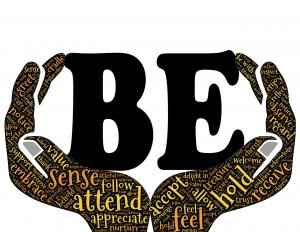It is not the mountain we conquer but ourselves. ~Sir Edmund Hillary (1919-2008)
It does not matter whether you are pursuing an internal date-driven excavation of self or peering into your ‘Days-Of-Yore’ defined by a specific time, writing your spiritual journey in the form of a memoir can empower you through the sharing of experiences and life lessons with others on their path of growth. If you share little else in common with other people, the love and search for God can be the bond that binds your memoir to them.
Your memoir can be cathartic for you and a life-saver for others.
A memoir may bring closure to old wounds while giving life to new challenges. In this article, we will discuss how writing a memoir involves risks on many levels, both in literary content and form, and psychological and emotional levels. You must decide the style in which you will dare to bare your soul to the world. Reading how someone else styles their published and successful memoir can help determine your style preference and how to organize your thoughts. Are you ready? Let’s start by comparing the most common memoir styles.
Memoirs are written in many literary styles with different goals. Here are two forms with differing goals.
Most memoirs are a timeline narrative with a specific message in mind. Some of the best still follow the path of Hero’s Journey with a classic rise-fall arc to keep the writing from becoming a fractured narrative with a scrambled chronology.
As the author of the memoir Surviving Cancerland: Intuitive Aspects of Healing interviewing authors of memoirs is a love of mine. When reading, I feel connected to Universal Oneness because when we share a personal experience with the world through literature, the world owns that experience. Universal ownership makes memoirs timeless evergreens in the Literary Forrest of books. They are a Written-Time-Capsule; a glimpse into the vulnerability of someone’s personal life during a specific time, or place. For this article, we will explore memoirs written in Blog-Diary-Form, and Snapshot-Timeline-Form.
Why do we love to read someone’s private thoughts and emotions in a diary? We can safely live vicariously through the eyes of the author.
When I interview memoir authors on my radio programs, their work usually falls into two categories; a time-line blueprint for surviving a crisis, or a joyful-journey down memory-lane.
An example of these two different memoir styles is available in the Video Podcast interview on the Memoir Expert Panel posted at the bottom of this article. The podcast was with Connie Bramer, author of How Connie Got Her Rack Back and Dr./Professor Robert Atkinson author of Year of Living Deeply: A Memoir of 1969.
The Diary-Memoir is exemplified by How Connie Got Her Rack Back which makes the transition from Daily Diary to Literary Memoir. To help Connie Bramer cope with her diagnosis of breast cancer and maintain some semblance of sanity as a single mother of two during treatment, she blogged about her daily cancer adventures which included dating during and after treatment. Connie then transformed her blog into a chronological Diary-Memoir that displayed her snarky sense of humor. Connie’s memoir is a day-by-day Tears-to-Triumph-hero’s journey that holds nothing back from the reader. The reader always knows where they are on the trip by the dates and, in some cases, the time of day written in the headline. The critical elements of the book’s success are vulnerability and humor. The memoir literary style is a diary.
A Timeline-Memoir is exemplified by Year of Living Deeply by Dr. Robert Atkinson, who is professor emeritus at the University of Southern Maine. His book is a journey that is equal parts inward and Universal discovery offered as a time-capsule-gift for the year 1969 which Dr. Atkinson feels shaped a generation with such unprecedented experiences as the lunar landing, Woodstock, and the maiden voyage of the Hudson River sloop Clearwater. In his memoir he uses music and events as the timeline of crossing paths with that time’s luminaries; musician Arlo Guthrie and Ramblin’ Jack Elliott, and author Joseph Campbell. Bob writes about how each one becomes a mentor, helping him to uncover timeless patterns as they unfold his life and link his own story with the stories of countless others. The result is a soulful, meditative memoir full of generational insight and a coming of age for mankind. The critical element to the book’s success is exciting places and people who changed the world. Its style is a literary timeline snapshot of history.
The Hero’s Journey in both books is an essential part of the books heat-beat or pulse.
However, the type of journey taken by the authors is very different. Dr. Atkins shares joyful nostalgia concerning a specific year and writes it as a snapshot story. Connie Bramer writes about surviving a crisis in Dear Diary-form.
Change for some people is frightening. We are creatures of habit. Change breaks the habit.
Looking back at life with a joyful heart is a way of reaffirming the positive aspects of change. It is a way of shining a light on life and saying, “Look at our accomplishments and how we have changed as human beings. Remember when….”
Journaling a crisis for public consumption is leading by example, often in the dark. To deal effectively with strife, we must get in touch with our inner-selves and work together toward the goal of survival. Sharing that work can save lives. Living vicariously through the pain, suffering, and success of others is a way to keep us from reinventing the wheel. We can learn from their lessons. It reassures us that, “Against all the odds, yes we can because now we know how. It’s been done before so we can do it again.”
According to Readers Digest, there are as many different types of memoir as there are people. Like Jeannette Walls author of the New York Times Bestseller The Glass Castle, and Frank McCourt, the Pulitzer Prize-winning author of Angela’s Ashes, you can write about your childhood. You can write about places you’ve visited, as Elizabeth Gilbert did in the blockbuster memoir The Camel Knows the Way, which chronicles her time with Mother Teresa and the Missionaries of Charity. You can write about a crime or injustice you encountered, as Mary-Ann Tirone Smith did in Girls of Tender Age, which traces the murder of a classmate. You can write a memoir about anything, no matter how small or seemingly inconsequential. Everybody has stories shelved in his or her subconscious, awaiting translation. The challenge is getting started.
What is the biggest thing that holds people back for writing a memoir? Fear that it will be boring.
In conclusion, the first step in writing a memoir is to write. The second step is choosing and embracing your style.
Your work can be part of your internal excavation or view into the past that may put you back on the right path to accomplishment in your present life. And it may preserve those successes and memories in a literary time-capsule for future generations of Life- Archeologists to excavate and examine.
As Mother Teresa so aptly said, “Yesterday is gone. Tomorrow has not yet come. We have only today. Let us begin.” Might we dare to add, “to write our memories now for tomorrow’s future? Your memoir is a literary time capsule. Are you ready?
Now, Please Enjoy Your Show:
https://www.youtube.com/playlist?list=PLFv46idmu66i6UjbSIjTHISFRlDW0ogPZ
Photo Credit: httpspixabay.comenlibrary-sky-birds-mystical-clouds-425730PixabayFree-Images-for-commercial-use-No-attribution-required.jpg
Research:
Robert Atkinson With Phil Cousineau – Year Of Living .., https://www.bookpassage.com/event/robert-atkinson-phil-cousineau-year-living-dee
Constance Bramer- How Connie Got Her Rack Back, https://www.amazon.com/How-Connie-Got-Rack-Back/dp/1770972919/ref=sr_1_fkmr0_1?keywords=How+connie+go+her+rack+back&qid=1559686096&s=gateway&sr=8-1-fkmr0
Great Tips On How To Write Your Memoir | Reader’s Digest, https://www.rd.com/advice/work-career/great-tips-on-how-to-write-your-memoir/
About Kathleen (Kat) O’Keefe-Kanavos: The Queen of Dreams. VIDEO/Radio Podcaster, three-time Breast Cancer Survivor, and Dream Expert on Dr. Oz, DOCTORS, NBC, & CBS. Dreams diagnose her illness. Kat and Duke U Medical Dr. Larry Burk co-wrote Nautilus award winner Dreams That Can Save Your Life. She’s a Syndicated Columnist and award-winning Author/Lecturer who promotes patient advocacy and connecting with Inner-guidance through Dreams. Learn more @ www.KathleenOKeefeKanavos.com

 httpspixabay.comenlibrary-sky-birds-mystical-clouds-425730PixabayFree-Images-for-commercial-use-No-attribution-required.jpg
httpspixabay.comenlibrary-sky-birds-mystical-clouds-425730PixabayFree-Images-for-commercial-use-No-attribution-required.jpg









